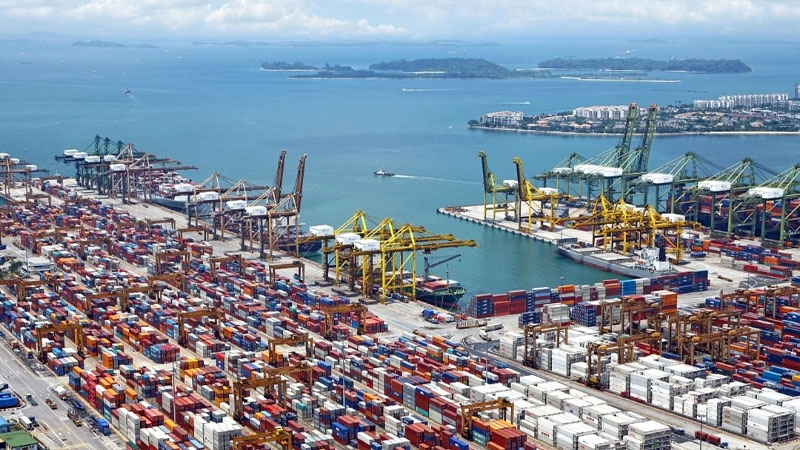Exclusive content

As global demand for shrimp continues to rise, Vietnam is striving to capitalize on this opportunity by strengthening its export capabilities. This article examines the strategies being employed to boost shrimp exports, the challenges faced by the industry, and the broader implications for Vietnam’s economic future, particularly for professionals in the shrimp trade.
The Global Shrimp Market and Vietnam’s Position
The global shrimp market is a dynamic and fiercely competitive arena, with major players including Thailand, India, China, and Ecuador. Vietnam, however, has emerged as a formidable contender, ranking among the top five shrimp exporters worldwide. In 2023, Vietnam’s shrimp exports reached approximately $4.2 billion, underscoring the industry’s vital role in the country’s economy, according to data from Vietnam’s Ministry of Agriculture and Rural Development. The United States, Japan, and the European Union are key markets, with the U.S. alone accounting for over 30% of Vietnam’s shrimp exports, based on trade statistics from the U.S. International Trade Commission.
Recent shifts in the global market have intensified competition. Ecuador, for instance, has seen a surge in exports, with its shrimp export value reaching $6.7 billion in 2023, driven by favorable farming conditions and lower production costs, as reported by the Food and Agriculture Organization (FAO). Vietnam must navigate this competitive landscape while addressing evolving market demands.
Strategies to Enhance Export Capabilities
To bolster its shrimp exports, Vietnam is focusing on several strategic initiatives:
- Improving Quality and Meeting International Standards: Vietnamese shrimp producers are increasingly adopting advanced farming techniques and investing in infrastructure to ensure high-quality products. Adherence to international standards, such as those set by the Global Aquaculture Alliance and the Marine Stewardship Council, is crucial for gaining access to premium markets. For instance, certification under the Best Aquaculture Practices (BAP) program is becoming a prerequisite for exporters targeting the U.S. and EU markets.
- Expanding Market Reach: While traditional markets like the U.S., Japan, and the EU remain critical, efforts are underway to diversify export destinations. Emerging markets in Asia, Africa, and the Middle East are being targeted, supported by trade agreements such as the Comprehensive and Progressive Agreement for Trans-Pacific Partnership (CPTPP) and the EU-Vietnam Free Trade Agreement (EVFTA). These agreements have reduced tariffs and trade barriers, enabling Vietnamese exporters to compete more effectively. For example, shrimp exports to the EU grew by 15% in 2023 following the implementation of the EVFTA, according to Eurostat data.
- Sustainability and Certification: Sustainability is increasingly pivotal in the global shrimp trade. Vietnamese producers are seeking certifications like the Aquaculture Stewardship Council (ASC) certification, which not only enhances marketability but also addresses environmental concerns. This aligns with growing consumer demand for sustainably sourced seafood, particularly in Western markets. In 2023, the number of ASC-certified shrimp farms in Vietnam increased by 20%, reflecting the industry’s commitment to sustainability, as noted in a report by the World Wildlife Fund (WWF).
Challenges Facing the Industry
Despite its robust growth, the Vietnamese shrimp industry faces significant challenges:
- Competition: The global shrimp market is highly competitive, with countries like Ecuador and India ramping up production. Ecuador’s ability to produce large volumes at lower costs has made it a dominant player, while India’s focus on value-added products has strengthened its market share. Vietnam must differentiate itself through quality and innovation to maintain its edge.
- Trade Barriers: Tariffs and non-tariff barriers pose hurdles. The U.S., for instance, imposes anti-dumping duties on Vietnamese shrimp, which were reaffirmed in a 2023 review by the U.S. Department of Commerce. These duties, ranging from 2.84% to 25.76%, increase costs for exporters. Additionally, ongoing trade tensions, such as those stemming from the U.S.-China trade war, add uncertainty to the global shrimp trade.
- Environmental Concerns: Shrimp farming has been linked to environmental degradation, including mangrove deforestation and water pollution. Addressing these issues is critical for the industry’s long-term viability and for meeting the sustainability criteria of international markets. The Vietnamese government has introduced regulations to promote sustainable aquaculture, but enforcement remains a challenge, according to a 2023 report by the United Nations Development Programme (UNDP).
Broader Economic and Political Implications
The shrimp industry’s success has broader implications for Vietnam’s economy. It generates substantial export revenues and provides employment to millions, particularly in rural coastal areas. The industry’s growth also highlights Vietnam’s ability to integrate into global supply chains and adapt to international market demands, a testament to its economic resilience.
Politically, the shrimp industry serves as a barometer for Vietnam’s trade relations. The country’s ability to navigate complex trade environments, such as U.S. anti-dumping duties and EU sustainability requirements, demonstrates its diplomatic agility. Furthermore, the industry’s emphasis on sustainability reflects Vietnam’s commitment to global environmental goals, potentially enhancing its international standing. For example, Vietnam’s participation in the FAO’s Blue Transformation initiative underscores its role in promoting sustainable aquaculture globally.